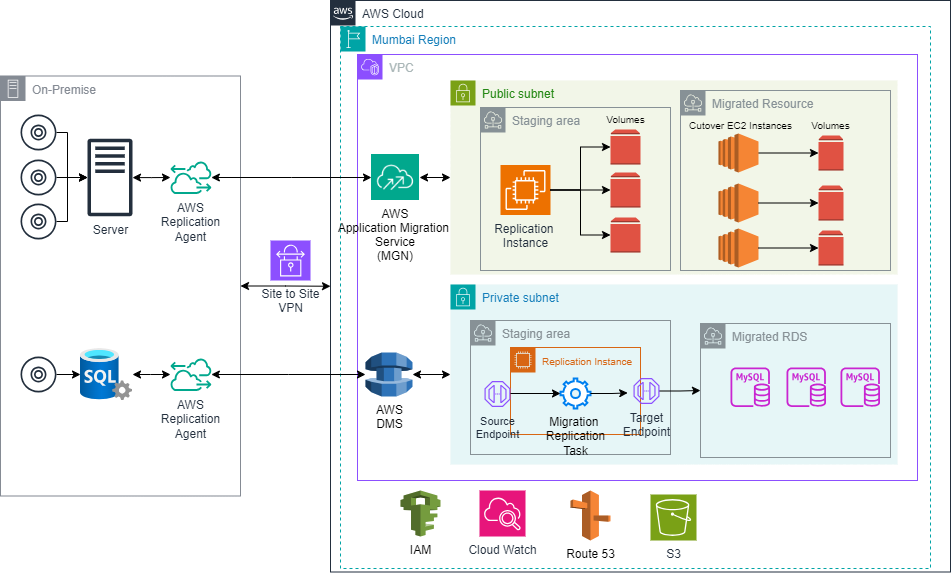About customer
Our client is one of the market leading companies who provides world-class global service to its associated clients in the educational ERP Management System for international schools, colleges, universities and institutes. Their services also include providing consistent support and helping clients in better understanding of products and services. This leading edtech company is dedicated to provide the prime quality products with its assistance and maintenance. Their main focus is on the attributes - Timeliness, customer service, creativity, enthusiasm and uniqueness.
Summary
Our client was operating six web applications hosted on multiple on-premise servers. These applications were running on a single in-house data center, responsible for both web server functionalities and storage. The data center infrastructure also included three MySQL database servers. Their team was planning to migrate their entire on-premise server infrastructure, including web servers and MySQL databases, to the AWS cloud and looking for an expert solution to ensure a secure and efficient migration process.
Challenges
• Lack of documentation support and redundant data for on premise datacenter.
• Poor application performance while accessing from different geo-locations
• Difficulty in scaling infrastructure to handle increased load and user traffic.
• Significant expenses for maintaining hardware, cooling, and power.
• Lack of redundancy leading to potential single points of failure.
• Increased vulnerability to physical and cyber threats.
• Insufficient disaster recovery and backup solutions.
• Frequent downtime and reliability issues affecting application availability.
• Difficulty in meeting compliance standards and regulatory requirements
Solution
Our client planned to migrate its on-premise web application servers and MySQL database servers to the AWS cloud. The goal was to achieve enhanced security, scalability, reliability, and cost-efficiency with minimal downtime during the migration process. The solution included:
Phase: 1 Pre-Migration Phase
Assessment and Planning
• Evaluated existing on-premise infrastructure, including server configurations, application dependencies, and database schemas.
• AWS Service Mapping: Identified AWS services that match current infrastructure needs (e.g., EC2, RDS, S3, VPC, Route53).
• Migration Plan: Developed a comprehensive plan detailing the migration strategy, timeline, and risk mitigation measures.
Phase: 2 Migration Phase
1. AWS Environment Setup
• Set up Virtual Private Cloud (VPC) with subnets, route tables, and gateways.
• S3 Buckets: Created S3 buckets for temporary data storage during migration.
2. Database Migration
• Used DMS to migrate MySQL databases to Amazon RDS for MySQL.
• Used AWS Application Migration Service (MGN) to replicate on-premise servers to EC2 instances.
• Used Replication agent Perform full load and continuous data replication to ensure data integrity.
• Tested the migrated databases for functionality and performance.
3. DNS Configuration
• Used Amazon Route 53 to manage DNS records and route traffic to AWS-hosted applications.
Phase: 3 Post-Migration Phase
1. Testing and Validation
• Tested web applications and databases to ensure they are working correctly in the AWS environment.
2. Monitoring
• Set up AWS CloudWatch for monitoring and AWS CloudTrail for auditing. Implement alerts for critical events and performance metrics.
3. Training and Handover
• Provided training sessions for client's IT staff on AWS management and best practices.
• Delivered detailed documentation of the new infrastructure, including configurations, access policies, and troubleshooting guides.
• Offered post-migration support to address any issues and ensure smooth operation.
Architecture diagram

